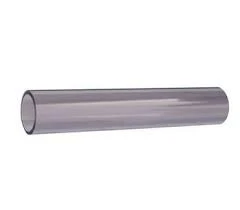Nov . 11, 2024 02:00 Back to list
High-Density Polyethylene Sewer Pipe Benefits and Applications for Modern Wastewater Systems
Understanding HDPE Sewer Pipes Advantages and Applications
High-Density Polyethylene (HDPE) sewer pipes have gained significant popularity in sewer and drainage applications due to their unique properties and advantages over traditional materials. This article delves into what HDPE sewer pipes are, their benefits, installation methods, and their overall impact on the plumbing and construction industries.
What is HDPE?
High-Density Polyethylene (HDPE) is a type of thermoplastic polymer made from petroleum. Known for its high strength-to-density ratio, HDPE is resistant to impact, chemicals, and UV radiation. These properties make it an ideal choice for various applications, particularly in the construction of sewer pipes.
Advantages of HDPE Sewer Pipes
1. Corrosion Resistance One of the main advantages of HDPE sewer pipes is their resistance to corrosion. Unlike traditional materials such as concrete or metal, HDPE does not rust or corrode, even when exposed to aggressive chemicals or harsh environmental conditions. This durability ensures a longer lifespan, reducing maintenance costs significantly.
2. Flexibility and Strength HDPE pipes have a unique flexibility that allows them to withstand ground movement and shifting without breaking or cracking. This makes them particularly suitable for areas prone to earthquakes or soil subsidence. Moreover, the high strength of HDPE means that it can handle high-pressure applications.
3. Lightweight Compared to traditional materials, HDPE sewer pipes are much lighter, which simplifies transportation and installation. This characteristic not only helps in reducing labor costs but also minimizes the need for heavy machinery during installation.
4. Reduced Leakage The fusion welding techniques used in connecting HDPE pipes create solid, leak-free joints. This substantially reduces the risk of leaks, making HDPE a preferred choice for sewer systems where preventing contamination is crucial.
5. Environmental Impact HDPE is a recyclable material, which contributes to its sustainability. The use of HDPE in sewer systems can greatly reduce the environmental footprint of plumbing projects, as they can be recycled at the end of their lifecycle.
hdpe sewer pipe

Applications of HDPE Sewer Pipes
HDPE sewer pipes are versatile and used in a variety of applications. They are commonly employed in
- Sewer Systems Due to their durability and resistance, HDPE pipes are ideal for municipal sewer systems, ensuring efficient waste management and minimizing the risk of environmental contamination.
- Stormwater Management HDPE is also widely used in stormwater drainage systems. Its design allows for the quick transport of water, mitigating flooding and reducing surface runoff.
- Agricultural Drainage Farmers utilize HDPE pipes for subsurface drainage systems, promoting better crop yields by preventing waterlogging in fields.
- Industrial Applications Many industries that require reliable and durable piping solutions choose HDPE for their wastewater management systems. Its resistance to chemicals makes it suitable for handling various industrial effluents.
Installation Methods
The installation of HDPE sewer pipes typically involves methods such as trenching, horizontal directional drilling, or pipe bursting. The choice of method depends on the specific project requirements, including soil conditions, existing infrastructure, and depth of installation. The fusion welding process ensures that joints are strong and leak-proof, providing a seamless flow throughout the system.
Conclusion
In conclusion, HDPE sewer pipes are revolutionizing the way we approach waste and stormwater management. Their corrosion resistance, flexibility, lightweight nature, and environmental sustainability make them superior to traditional piping materials. As industries continue to evolve and the demand for efficient and eco-friendly systems grows, HDPE pipes are likely to play an increasingly important role in shaping our infrastructure. Adopting HDPE technology not only promotes durability and efficiency but also signifies a commitment to responsible environmental stewardship.
-
High-Quality PPR Pipes and Fittings Durable ERA PPR & PVC PPR Solutions
NewsJul.08,2025
-
Black HDPE Cutting Board - Durable, Non-Porous & Food Safe HDPE Plastic Cutting Board
NewsJul.08,2025
-
High-Quality CPVC Panel Durable HDPE & PVC Panels Supplier
NewsJul.08,2025
-
Double PE Welding Rod Supplier - High Strength, Durable & Versatile Welding Solutions
NewsJul.07,2025
-
High-Quality PVC-O Pipe Supplier Durable 75mm PVC Pipe & Connections Leading PVC Pipe Company
NewsJul.07,2025
-
HDPE Drainage Pipe Supplier – Durable & Corrosion-Resistant Solutions
NewsJul.06,2025

